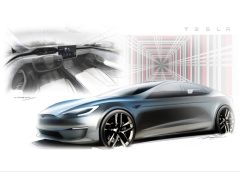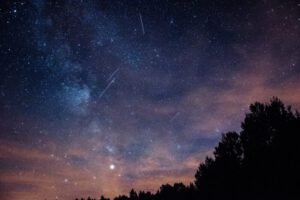
Tech News to Know This Week: Aug. 9-15, 2022
[ad_1]
Every day we wake up, drink a cup of coffee, and get ready for work. Following are a handful of stories from around the tech world condensed to fit into one single cup of coffee. These are the things you need to know before you step foot out of your door (or in front of a webcam) and into the real world this morning.
So sit back, grab a cup, and start your morning off right with a few “Quick Bytes” from Innovation & Tech Today.
Western Computer Chips Found in Russian Weapons Post-Sanctions
A joint investigation has found Western companies continued to supply Russia with computer parts after sanctions were placed on the country.
Western exports of computer chips have fueled the proliferation of Russian missiles and rockets since the war began, according to a senior Ukrainian official who requested anonymity for security reasons.
“Without those U.S. chips, Russian missiles and most Russian weapons would not work,” the official said.

Three of the manufacturers whose chips were found in Russian weaponry — AMD, Analog Devices, and Infineon – said they had launched internal investigations after Reuters provided the customs data showing thousands of recent shipments of their products to Russia by third-party sellers.
Infineon and Texas Instruments said products that they had shipped were already in transit at the time of the invasion. Intel said goods it shipped were internal company deliveries before it ceased its Russian operations in early April.
Since Russia invaded Ukraine on Feb. 24, Russian troops have fired more than 3,650 missiles and guided rockets upon various regions in the country.
On July 14, three cruise missiles struck the city of Vinnytsia, killing 27 people, including a four-year-old girl, according to Ukrainian authorities. Russia said it only fires at military targets.
French Scientist Posts Photo of Charcuterie, Tells Everyone It’s JWST Photo
For non-scientists, it can sometimes be difficult to understand exactly what photos of exoplanets and nebulae mean. That’s why we have astrophysicists to point out whether an image is of a dying star or a proto galaxy, a near-infrared or mid-infrared image.
Prominent French physicist Étienne Klein took advantage of that ignorance by posting a photo of a slice of chorizo on Twitter and passing it off as a photo of a distant star taken by the James Webb Telescope.
“Picture of Proxima Centauri, the nearest star to the Sun, located 4.2 light years away from us. It was taken by the James Webb Space Telescope. This level of detail… A new world is unveiled everyday,” he told his more than 91,000 followers on Sunday.
After receiving backlash from his followers and a number of people who retweeted the photo, he apologized for the prank while also taking the opportunity to remind the online community to fact-check their information.
“Let’s learn to be wary of the arguments from positions of authority as much as the spontaneous eloquence of certain images,” he said.
July 19 Marks Shortest Day in Recorded History as the Earth Spins Faster
The Earth is spinning faster than it has in recent decades. Scientists confirmed Earth recently took the shortest amount of time to revolve around the Sun since scientists began measuring the planet’s rotation with high-precision atomic clocks in the 1960s.
On 29 June this year, midnight arrived 1.59 milliseconds sooner than expected.
In 2020, the Earth turned out 28 of the shortest days in the past 50 years, with the shortest of those, on 19 July, shaving 1.47 milliseconds off the 86,400 seconds that make up 24 hours. The 29 June record came close to being broken again last month, when 26 July came in 1.5 milliseconds short, according to the Guardian.
However, compared to the over four billion-year history of the Earth, days are longer than they were in the prehistoric era. Two billion years ago, a day would pass in less than 19 hours. The lengthening of days is due to the gravitational tug the moon has on the Earth, producing tidal friction that slows the Earth’s rotation.
Highlights from Tesla’s Annual Shareholder Meeting
In keeping with tradition, Elon Musk made some bold statements and announced a flurry of new products and updates at Tesla’s annual shareholder meeting on Aug. 4. Here are some of the key takeaways:
- Preliminary voting results show investors approved a 3-for-1 stock split.
- Musk boasted about Tesla’s Full Self-Driving (FSD) beta 10.13 update, saying it was almost worthy of the software version “10.69.” In addition, FSD beta should become available to anyone who requests it in North America by the end of this year. The system has over 40 million miles driven.
- Tesla is estimating a two million-unit production capacity by the end of this year. Meanwhile, Tesla produced its 3-millionth EV within the last week
- Tesla hopes to have 10 to 12 Gigafactory locations, each with 1.5 to 2 million units in annual production capacity in the near future. According to Musk, the Tesla Fremont Gigafactory has the highest production output of any factory in North America.
- Tesla is targeting scaled Cybertruck production by the end of 2023. Musk expects to reach high volume production of the 4680 battery cell by the end of this year.
- Musk predicted Tesla will someday become the most valuable company in the world with the onset of the Optimus robot en masse and self-driving robotaxis.
James Webb Telescope Discovers Space Warping Bubble
[ad_2]
Source link


